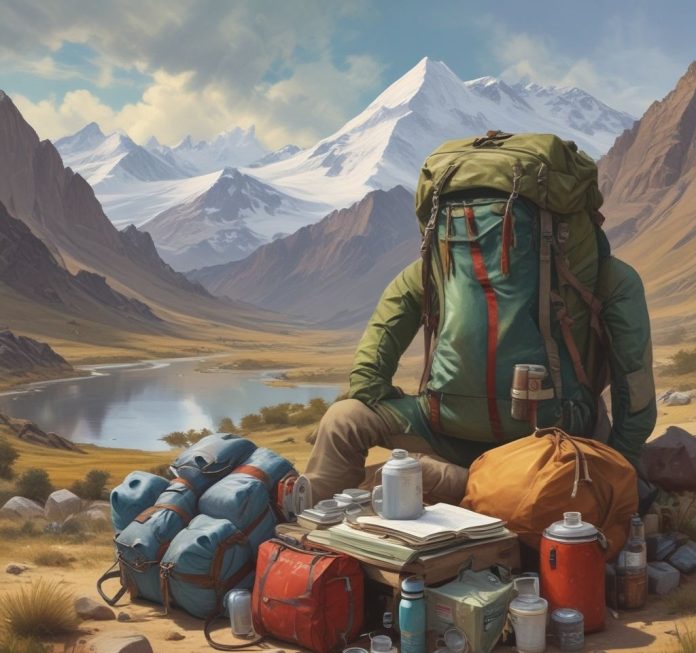You’ve booked your Everest Base Camp trek—congrats! Now comes the surprisingly tricky part: packing. The Everest Base Camp trail isn’t just any hike. It’s a multi-day, high-altitude adventure where every ounce of weight and every piece of gear matters.
The good news? You don’t need to bring the entire contents of an outdoor gear store. What you need is a smart, balanced packing list that keeps you warm, dry, and comfortable while you trek one of the most iconic trails on Earth.
Here’s your ultimate guide on what you really need to pack—and what you can leave at home.
The Must-Have Essentials for EBC
Backpack Setup
You’ll want a 50-65 liter backpack or duffel bag for your porter to carry (if you’ve hired one) and a 20-30 liter daypack for your personal essentials like water, snacks, and layers. Make sure your daypack has a comfortable hip belt, good back support, and ideally, a rain cover.
Clothing Layers: Your Survival Kit
Layering is key in the Himalayas where temperatures can swing from sunny and mild to freezing cold within hours.
- Base layers: Bring at least two sets of moisture-wicking thermal tops and bottoms (merino wool or synthetic).
- Mid-layer: A warm fleece or insulated jacket is perfect for cooler afternoons and evenings.
- Outer shell: A waterproof and windproof jacket and pants combo is essential for protection from snow, rain, or the occasional dust storm.
- Down jacket: A thick down jacket is non-negotiable. Even in spring and fall, mornings and nights can be brutally cold at high altitudes.
Pants, Shorts, and Teahouse Comforts
Pack two pairs of durable trekking pants, one pair of trekking shorts for warm daytime hikes (you may get lucky), and something comfortable for lounging at teahouses, like lightweight tracksuit bottoms or thermal leggings.
Footwear for Happy Feet
- Hiking boots: Choose sturdy, ankle-supporting hiking boots that are well broken-in. Blisters on the trail are no joke.
- Camp shoes: Lightweight sandals or sneakers give your feet a break after a long day of trekking.
- Socks: Bring 3-4 pairs of trekking socks and 1-2 pairs of warm, thermal socks for cold nights.
Head and Hand Protection
- A warm beanie or hat for cold weather, plus a sun hat or buff for daytime sun protection.
- Gloves: Both inner liner gloves and insulated outer gloves are essential for handling frosty mornings.
Important Gear You’ll Be Glad You Packed
Hydration System
Carry two reusable water bottles or a hydration bladder with a minimum combined capacity of three liters. Tap water is not safe to drink, so bring water purification tablets, a SteriPEN, or a portable water filter to keep you hydrated without worrying about waterborne illnesses.
Sunglasses
High-UV sunglasses or glacier glasses are a must. At high altitude, the sun’s intensity can be fierce, especially on snowy trails where the glare is doubled.
Headlamp
A good headlamp is essential for early morning starts or nighttime bathroom visits at teahouses. Don’t forget extra batteries, as cold temperatures can drain them faster than usual.
Toiletries and Hygiene
- A small bag of essentials: biodegradable soap, toothbrush, toothpaste, lip balm with SPF, hand sanitizer, and a generous supply of toilet paper (many teahouses don’t provide any).
- Wet wipes and a fast-drying travel towel will also come in handy.
First Aid and Medications
Your personal first-aid kit should include altitude sickness medication (consult your doctor about Diamox), pain relievers, Imodium, blister care (moleskin or Compeed), rehydration salts, and any personal prescriptions.
Optional but Smart Add-Ons
Power Bank and Charging Cables
Teahouses will charge you for power (literally), and sometimes charging points are limited. A power bank is your lifeline for keeping your phone, camera, or GPS watch going on the trail.
Snacks
Energy bars, chocolate, nuts, or jerky will give you that much-needed morale boost on long ascents. Plus, high-calorie snacks are gold when trekking at high altitude.
Entertainment
A small journal, book, or Kindle is perfect for those quiet evenings at the teahouse when the Wi-Fi cuts out (which will happen). It’s also a great way to document your adventure.
Dry Bags and Ziplock’s
Dry bags or even sturdy Ziplock bags will keep your electronics, documents, and clothing dry and organized inside your backpack.
What You Can Leave Behind?
Now for the fun part—what you can happily leave at home.
- Jeans: Too heavy, slow to dry, and uncomfortable for trekking.
- Drones: Most of the Khumbu region restricts drone use without a special permit, and the winds aren’t friendly to flying gadgets.
- Too many gadgets: There’s no need for tablets, laptops, or anything you won’t use daily.
- Fancy outfits: Trust us, no one will care how you look while sipping yak butter tea at 4,000 meters.
A Few Trail-Tested Tips
- Pack light but don’t skimp on warmth. At altitude, being cold drains energy fast.
- Test all your gear before your trip. Make sure boots are broken in and your down jacket fits over your other layers.
- Remember the trekking mantra: “Take only memories, leave only footprints”—which includes carrying out your trash.
Final Thoughts
Packing for Everest Base Camp is about being practical, efficient, and prepared. Every item should serve a purpose, and everything should be able to withstand the elements. When done right, you’ll have just what you need—and your trek will be all the more enjoyable for it.

